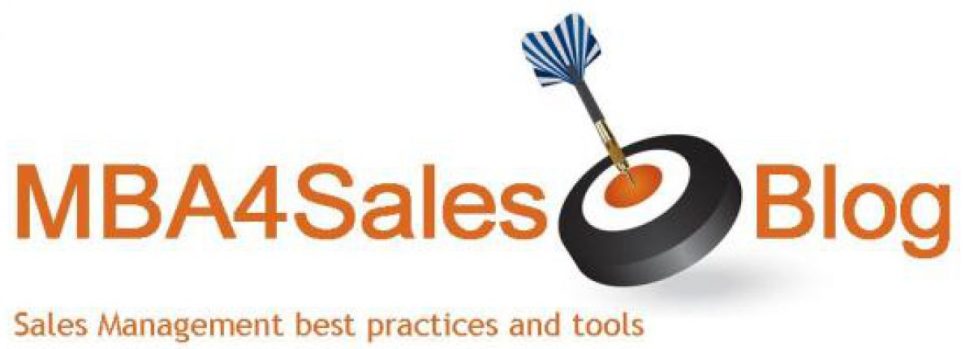Perhaps the most important aspect of sales messaging is the ability of the sales person to take that messaging and apply it to customer dialogue. Otherwise, all the social media, blogging, website development and other messaging channels are a waste of time. In other posts, I have focused on why integrating the sales message with marketing dialogue is critical. To see an example, take a look at my e-paper “Operationalizing Social Media”, where I describe the integration of sales and messaging content.
In this post, I am going to focus on the mechanics to illustrate the process. To do this, I am going to borrow a little bit of knowledge I acquired from my colleague, Frank Visgatis. Frank is a renowned sales trainer and is the co-author of the book “CustomerCentric Selling“. I am a big “CCS” fan and have used several CCS techniques in my own selling efforts. I encourage you to explore CCS and to consider Frank’s training classes.
Where to get the Message
The first step to building a sales dialogue is to understand the market messaging that your firm provides. When I say “market messaging” it’s my assumption that you are actively soliciting via direct conversations and / or social media dialogue from customers about why they use your product, what benefits it provides them and how it helps them better serve their customer.
Transforming the Message into a Sales Dialogue
In obtaining this information you are now aware of:
- What goals, needs, problems or objectives your customer is solving using your product.
- You can identify the circumstances under which the customer uses your product to satisfy these goals, needs, problems or objectives.
- You can qualify and quantify these goals, problems, needs and objectives through customer dialogue. Example: you can quantify how much cost savings your product will create through a reduction of work effort, time savings or reduction in some material cost (i.e., lowering shipping costs).
- You know what questions to ask in order to qualify and quantify opportunities.
In CCS terms, this process is called “Solution Development”. In Solution Development, a framework is created to provide a sales person with a technique to have appropriate value-added conversations with the prospect or customer. This framework is created with the support and involvement of the Marketing organization because in most cases Marketing has responsibility for message content. As I have said in other blog posts, it is critical that the Marketing team focus on the customer, versus being more internally focused on “pushing” product features and benefits out to the customer.
In other words, all stakeholders involved in Solution Development must focus on what the customer wants and values.
The dialogue itself is built using templates called “Solution Development Prompters™” (or SDP’s) that allow the conversation to be guided in a meaningful and behaviorally correct way:
- “Framing” questions solicit the buyer’s input, once a goal is shared, to align with the buyer’s current situation. Framing questions facilitate buyer input and produce alignment between the seller and buyer.
- “Diagnostic” questions allow the sales person to qualify and quantify the value, thereby defining what usage scenarios might be most appropriate to a customer. “Usage Scenarios” (a variation on “Diagnostic” questions) describe how the offering can be used by the customer to create the sought after value. There are usually several Usage Scenarios to describe how a product or service can help the customer achieve goals, solve problems or satisfy needs.
- “Confirmation” questions allow the sales person to articulate the value and gain the customer’s agreement that the value is in alignment with their goals, problems, or needs. These are not questions that necessarily “close the deal”; instead, the customer is asked if the Usage Scenarios are ones where they themselves agree that the product or service adds value.
It’s not unusual in Solution Development to review several Usage Scenarios in one or more meetings with the customer. It’s also a great method to refresh and qualify new sales opportunities with customers who have previously purchased products with your firm. (FYI, all of this is documented in “CustomerCentric Selling“, Chapter 8, “Sales Ready Messaging®”.)
Executing the Dialogue with the Customer
The next step is to provide the SDP’s to the sales team and to get them to rehearse so that they know exactly how to conduct the dialogue with the customer. In my experience, sales people tend to be concerned that this approach is too “scripted” for them to execute.
Certainly, like any training, knowledge or information provided to sales people, it has to be rehearsed and internalized so that the conversation doesn’t sound contrived. Management often thinks Solution Development takes too much time to learn and execute. Ironically, Management thinks nothing of sticking a cold calling script in front of a sales person and expects them to properly execute this “scripted” (mostly contrived) dialogue. I would argue that regardless of the conversation, the sales team better rehearse it on a continual basis. Otherwise, how can Management be assured that the right conversations are being conducted? It’s this investment in time and effort that really changes the game when sales people are having actual customer dialogue.
Getting More Information
I encourage you to get a copy of CustomerCentric Selling or attend one the CCS workshops (or check out their website here). This is just one technique for building appropriate customer dialogue but I think it is one of the best ways to take Marketing content and translate it into a legitimate conversation that sales people can have with customers. It works!
